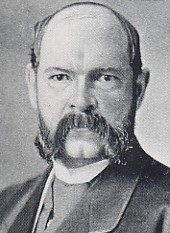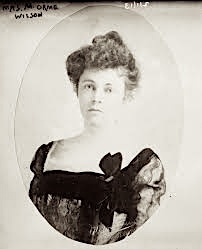Her social power fading and New York changing, a look at the last years of Mrs. Astor’s life
In the prime of her life at the height of the Gilded Age, Caroline Schermerhorn Astor was New York City’s undisputed social doyenne.

The gatekeeper of high society (a role she appointed herself to after her mother-in-law’s death in 1872), “Lina,” as those close to her called her, presided over the social schedule in both New York and Newport, Rhode Island, helping define the extravagance of the 1870s and 1880s.
But in the following decade, the exclusivity and rigid traditions of society began to loosen and become more vulgar. Mrs. Astor, born in 1830, was also getting on in years.
“The active influence Mrs. Astor enjoyed over society peaked in 1891,” wrote John D. Gates, author of The Astor Family.

Times were changing, and Mrs. Astor’s role as the head of society was changing as well. In these last years of the Gilded Age, as the 19th century gave way to the 1900s, what was her life like?
She started the 1890s as a widow. In 1892, her husband (below photo), William Backhouse Astor, Jr., died of an aneurysm in Paris. William Astor never had any interest in his wife’s social events and preferred sailing his yacht as far from New York as possible.
Mrs. Astor “went into mourning, more in the interest of good form rather than sorrow or bereavement,” wrote Gates.

The next year, her 34-year-old daughter Helen Roosevelt died of an overdose of laudanum. After another period of mourning, she “found society much changed,” wrote Gates. She faced a new generation of society queens who didn’t “accept the credentials of Mrs. Astor’s older circle.”
In the 1890s, she also changed houses. Her longtime brownstone mansion at Fifth Avenue and 34th Street—gifted to Mrs. Astor and her husband in 1853 by the Astor family after their marriage—was the site of her regular season of teas, dinners, and an annual ball held every January.
This mansion, where Mrs. Astor raised her five children and sat under her own portrait in the drawing room as she greeted invitees to her fabled balls, was now overshadowed by the new Waldorf Hotel (second photo). The hotel was built to intentionally annoy her by her former next-door neighbor and nephew William Waldorf Astor.

So Mrs. Astor left Murray Hill and traded up to a French Renaissance palace (above photo) on Fifth Avenue and 65th Street, with a magnificent marble staircase and a ballroom big enough to hold 1,200 guests. She shared this double mansion, designed by Richard Morris Hunt and completed in 1896, with her only son, John Jacob Astor IV.
In Mrs. Astor’s half of the double mansion, she continued to host social events, like a formal dinner for Prince Louis of Battenberg with Victor Herbert’s orchestra as entertainment. (Below, an illustration of her annual ball in 1902.) But the end of her reign was near.
The ball held on January 8, 1905, were she received her 800 guests wearing purple velvet trimmed with sable and jewels that supposedly belonged to Marie Antoinette, would be her last.

Her health was fading. Now in her 70s, she remained in the “splendid isolation of her chateau on Fifth Avenue,” wrote Greg King in his book, A Season of Splendor: The Court of Mrs. Astor in Gilded Age New York.
She suffered a nervous breakdown, according to a 1908 New York Times article, and the following summer didn’t return to her Newport mansion, Beechwood.
Interrupting her isolation was an interview she gave in 1908 to a reporter from the Delineator, a women’s fashion and general interest magazine.

Mrs. Astor spoke about her role as a society leader as if she still had the role, and then hinted at her mortality. “I am not vain enough to believe that New York will not be able to get along without me,” she stated. “Many women will rise up to fill my place.”
Later that year, Mrs. Astor fell down her marble staircase. “Servants found her moaning on the floor, her halo of white hair caked in blood,” wrote King. A doctor stitched the cuts she sustained to her head. Though the wounds healed, her mind was never the same.

“The great chateau on Fifth Avenue fell into a gloomy silence, as rooms once filled with music and laughter were shuttered, their furniture hidden under dust covers and chandeliers swathed in netting,” continued King.
“In the mornings, Caroline received her butler, discussing details for dinners that would never take place, and discussed guest lists for imaginary balls. . . . In the evenings, after her customary carriage ride through Central Park, Caroline received her silent, empty house.”

As her dementia worsened, her mind retreated to the past; at one point she was convinced she was pregnant and began preparing a nursery.
She died on October 30, 1908 after being confined to her bed due to heart palpitations, according to King.
Her son (above portrait) and his wife had been by her bedside, but only daughter Carrie (at left) was with her in her final hour.
Rumors had swirled over the past few years that Mrs. Astor was in decline, so the news of her death wasn’t a surprise. Newspapers paid tribute to this fabled and feared New Yorker. Not only was it the passing of a formidable woman, but the passing of an era.

Her funeral was held in her Fifth Avenue mansion, and she was buried beside her husband in the Astor mausoleum (above photo) at Trinity Cemetery on West 153rd Street.
Erected in her memory by Carrie in 1914 is the Astor Cross. The cross stands tall in the cemetery at Trinity Church on Lower Broadway—the same church where Mrs. Astor was married and soon began her rise as a woman of so much influence, contemporary audiences continue to be fascinated by her.

[Top image: NYPL Digital Collections; second image: MCNY 93.1.1.17178; third, fourth, fifth, sixth, and eighth images: Wikipedia; seventh image: NYPL Digital Collections; ninth image: Find a Grave]



